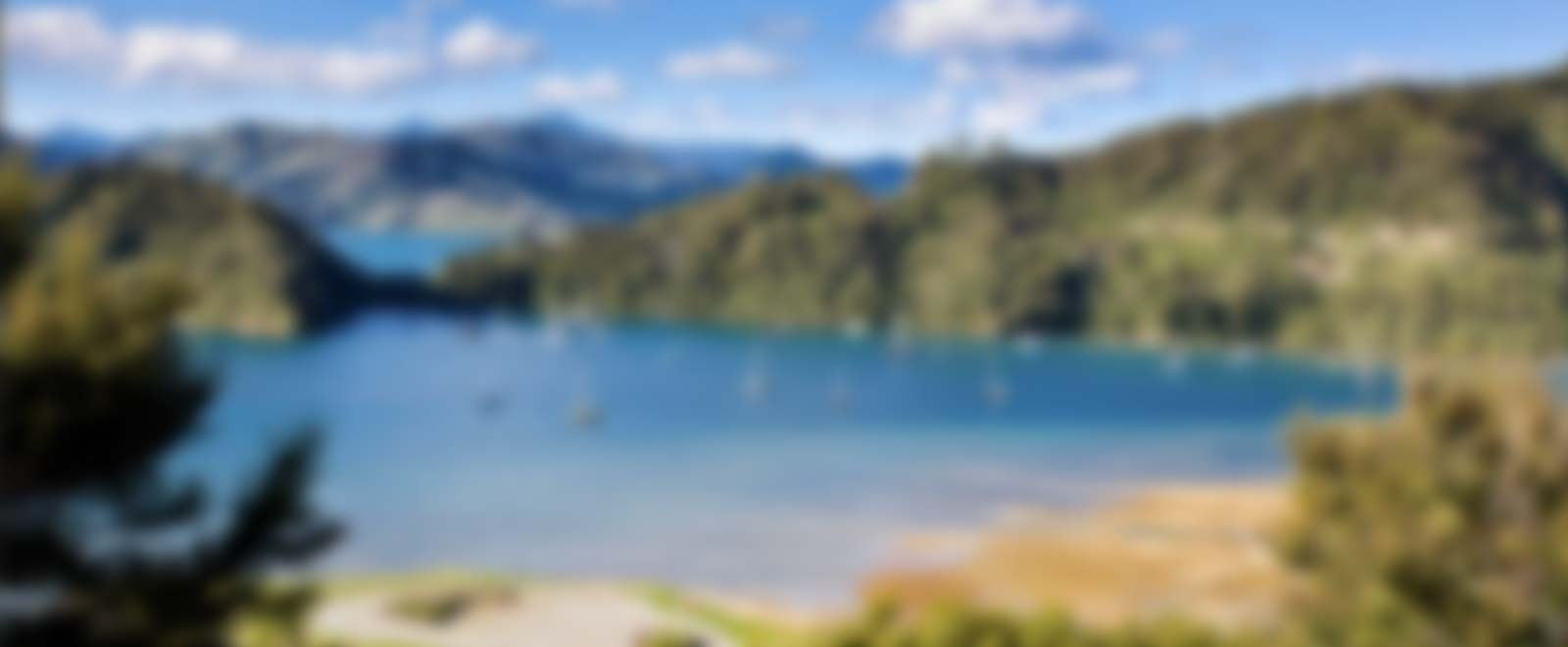It is not certain how this bay got its name but it has been suggested the bay is named for a Captain Cutter or from the fact it was a place where whales were cut up.1
The flat land in this bay contains significant archaeological remains and has been registered as a historic reserve. In the 1970s archaeologists discovered evidence of prehistoric middens or rubbish heaps, indicating early occupation by Māori. In addition, evidence was found of a nineteenth century whaling station and associated settlement. Remains indicate the settlement had at least five dwellings, possibly more and had a boiling down floor where whale oil was removed from blubber.2
In 1839 Captain Daniel Dougherty and his Irish-American wife, Sarah née McAuley settled in the bay to run the whaling station and a grog shop.
In 1848 the schooner, Bee, landed the south island’s first merino sheep in the adjacent bay, Whangatoetoe. The sheep, which were to become the foundation of the Marlborough flock, had been imported from Australia for cousins Charles Clifford and Frederick Weld. With the assistance of Daniel Dougherty, the sheep were yarded in Cutters Bay with barrels of whale oil acting as make-shift pens. Later the sheep were punted across to Rarangi and walked to Flaxbourne Station in Marlborough.3
In the 1940s the remains of the sailing vessels, Holmwood and Alameda were brought to the bay from Wellington after they were no longer needed as coal hulks. They were given to local farmers for salvage purposes and afterwards scuttled and burnt at the low water mark. Evidence of the hulks remain.4
Around the point, towards Robertson Point is Tonguers Bay. This bay was most probably named due to the whaler, Michael Aldridge, who processed the whale tongues he was given in payment for acting as a translator or ’tonguer’ between Maori and Europeans in this bay.
On average an individual could get about six to eight barrels of whale oil from the tongue and other unprocessed parts of whale carcass.5
It is worth noting that another bay, located just around from Separation Point is named Tongue Bay.
It is possible this bay is also associated with Michael Aldridge and the processing of whale tongues or more likely it is named for the Tongue Peninsula upon which it is located.6
1. James R Eyles, Place Names of Port Underwood: a Post European History (Picton, River Press, 2002) 51.
2. Michael M Trotter, Port Underwood Archaeological Survey (Christchurch: Canterbury Museum, 1976) 10, 18.
3. Jonathan Harlen, the School at Ocean Bay (Queen Charlotte Sound: Cape Catley, 1987) 13.
4. Loreen Brehaut, the Bays of Port Underwood (Picton: Picton Historical Society, 2012) 15.
5. Eyles, ‘Names of Port Underwood’, 52-53.
6. Brehaut, ‘Bays of Port Underwood’, 11.



